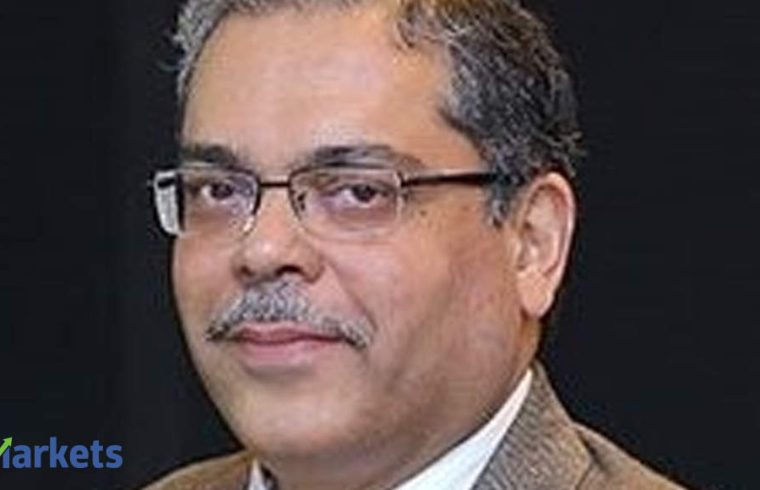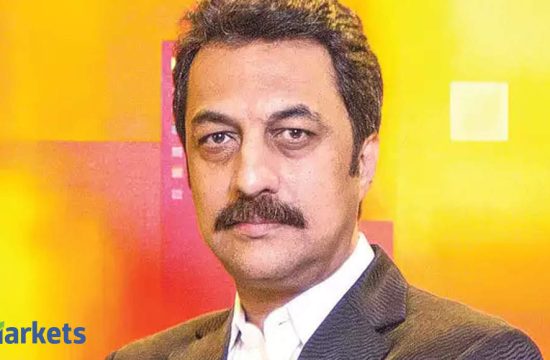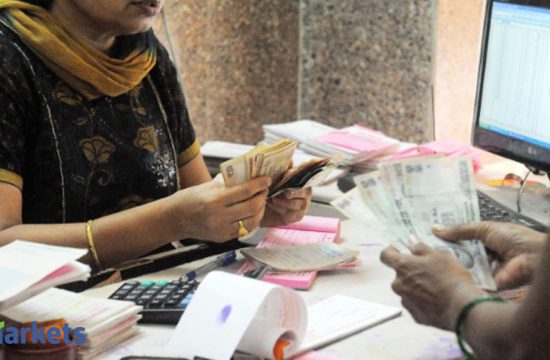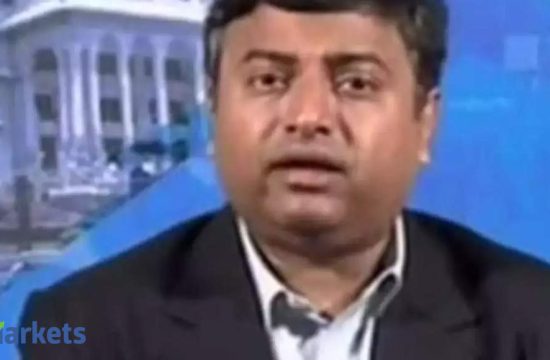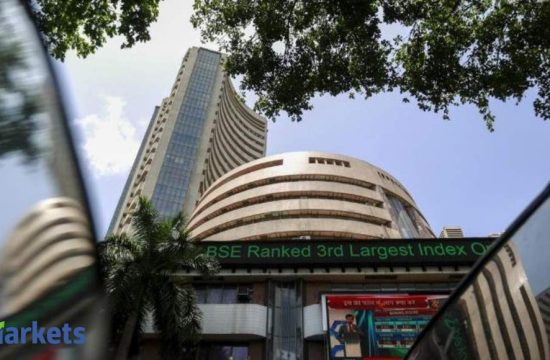
The power sector over the next two-three years can give you reasonably good returns from the stock market, says the independent analyst.
Monday did not quite belong to smallcaps as was anticipated but IT was the flavour of the day. Do you believe that IT is good to go for a longer run from here?
If the market has to move up, certain sectors have to and right now this is one sector where relative valuations are still cheaper than the others and the commentary that is coming through seems to indicate that there is going to be a better growth prospect than perhaps what we had a few months ago.
More importantly, growth now seems to be a little more robust than even what we were hearing in terms of commentary at a pre-Covid level. If there is a growth uptick, then I do not think there is much holding this sector back. That said, frontline companies are reasonably priced. I would argue that if you have to be in IT, you will probably get a little better take from the next rung of companies.
The auto ancillary space, especially tyres, are seeing a bit of a rebound. Anything that interests you here? Apollo Tyres, Balkrishna all of them holding up.
If you have to be in tyres, the two names you mentioned are probably best positioned. Largely, the commentary that the companies are putting out is that and the demand that the auto ancillary players are witnessing seems to be restocking demand rather than a fundamental demand at the consumer level. We have to wait and see what happens after the festival season is over.
Clearly a lot of faith is being put in the fact that the consumer season will revive the sector quite a lot. Even if you do get a revival, it will still be lower than what it was last year but at least incrementally from here on, the numbers are expected to look up. Among the frontline companies in auto, I do not find too many that have any significant value and therefore auto ancillaries may be a place where you may be able to get a better bet. Anti-China sentiment is good for tyres because they always have this issue of imports and given the fact that they already have capacity, in some cases overcapacity, any kind of import restrictions will be good for them.
How are you looking at the consumer durable space?
If the festive demand does not give you an uptick, I do not know what will because almost 30-40% of the annual sales happen at this period. So you have to take a bet that the festival demand will be better than in the last few months. That said, the key question is how much better or worse it is compared to last year. That to my mind will determine how far the companies can go because it is not as if these companies are very cheap or have not rallied already. Even if you were to look at it as an unlock play, the festival demand will give you both the festival as well as pent-up demand indication. You will have to see how the numbers come through before one could argue that there is actually a sustained movement up. It seems to me a tad difficult assuming that you will get the same level of demand even as last year.
While last year also was showing signs of slowdown and numbers were coming down, at least people were still employed. This year, compared to last year, you would have much higher levels of unemployment or salary cuts. I do not see how the season can be better but if the numbers are good, then obviously one has to revise one’s thesis.
What are some of the themes that you would possibly look at from the broader markets?
There are only three sectors in the country which have sustainable earnings growth and that is largely the FMCG, IT and pharma. Everything else is cyclical. Now within the cycles, you can try and figure out how to time it if you are good at that but right now the one macro theme that I see is the resurgence of inflation. Even RBI has shown some concern there but in my view not enough. They are playing it down because otherwise they will have to necessarily do something about raising rates.
“If you have to be in financials, there is a wide choice and frontline private and public sector banks are probably the better bet.”
The one clear consequence of putting in import duties as well as making sure that most of the products used is made in India is the fact that these items will be costlier. The reason they were being imported was not because we could not make that but we cannot make them cheap enough. Consequently, you are going to see a resurgence of inflation and it is not in India only effect, it is something that is going to happen around the world and that will mean that most heavy assets industries will find that it has become very expensive for companies to set up new companies in that sector.
So to my mind, things which are old and boring are the ones you want to look at. For example, the power sector is something that I would argue over the next two-three years can give you reasonably good returns from the stock market. I would also argue that things like fertilisers, etc, not because they are related to farms but the fact that they are very capital intensive will also likely give you reasonable returns. Basically inflation has been considered dead. I am arguing that there is a case to be made for the return of inflation.
Where does that then leave NBFCs?
I would avoid NBFCs for the simple reason that if you are looking at a situation where if RBI persists with its attempts to keep interest rates low, that is not good for banks or any kind of lending institutions. More importantly, if the yield curve remains flattish which is what we have right now, then you cannot be making money. More importantly, liability franchises are likely to remain important. It will take some time before consumer-led growth comes back and from that perspective, if you have to be in financials, there is a wide choice and frontline private and public sector banks are probably the better bet in my view.
Where does that leave HFCs because they have a double edged sword with real estate being in doldrums as well and this is not just a Covid thing, it was lacklustre even before that?
Well that is true but real estate would be one of the beneficiaries of the inflation theme that I just mentioned. Essentially, whenever there is an increase in price, you begin to sell assets. If you look at the overall construction business of the real estate market, the new capacity has been coming down at the same time. Arguably at the mid and upper segments, the affordability has been increasing and there will be a turning point sometime soon.
I am not predicting that it will happen in the next three or six months but I am saying that the valuations have now become a lot more reasonable in terms of what you can get in many of the micro markets around the country, barring a few extremely expensive hotspots. Even Mumbai has for example not really moved very much and that means there has been a price fall because the prices have fallen let us say even 10% over the last four or five years with no increase. That really means that things have become cheaper. So net-net, real estate may not be the worst performing sector going forward from here on.
From that point of view, at least HFCS have no great reason to worry about their asset quality. There is no doubt that it is one of the most competitive sectors to lend in because it is reasonably well collateralized and every bank wants to put money into it. But if the HFCs have a decent process, if they are faster than most of the public sector banks in terms of processing the loans, they can make sure that their own client base is reasonably segmented and doing well. I do not see that as a sustained problem. At the end of the day, we remain a capital short country.
What is your view on BHEL? Brokerages seem to have written this one off.
The near term fundamentals are obviously disappointing. There is no great order book that is expected, the receivable position still continues to remain upwards of some Rs 33,000-35,000 crore. From a cash flow perspective, it is an NBFC rather than an engineering company. The interesting thing I thought about BHEL was the fact that the company had attempted finding joint venture partners or even companies, which were willing to co-manufacture with it using its rather extensive land as well as the fact that they have reasonably good manpower based good technology and so on.
If some of that were to come through, it would have been an innovation worth talking about. I do not think any significant news has followed the initial announcement that BHEL made. So for the near term, it will continue to remain a drag. That said, if you were to assume that over the next two, three years you will get a resolution in terms of the power space, then demand for replacement will come back into BHEL because many of the existing especially public sector power plants perhaps can be mothballed or will need significant refurbishment by and large those orders will likely go back to BHEL.
If it were to come down to Rs 20-25, I would think that it would be a good time to buy it and hold it for the next two or three years, maybe just not yet.
What is your outlook on Ashok Leyland?
Frankly this is the only play in the commercial vehicle segment but that said I am not very convinced that the heavy commercial vehicle segment is going to recover anytime soon. But the light commercial vehicles segment is showing some signs of improvement but I do not see much value at the current price, especially after the recent run up that we have seen in any of these companies, especially in the auto sector.
What is your view on IT?
As we discussed a while back, it is one of the better performing sectors. The commentary seems to indicate that the order books are improving and maybe the work-from-home scenario is inducing more companies to go and get more technology platforms. Net-net, midcap IT would probably outperform the large caps which will probably be one of the leading sectors in the market.
